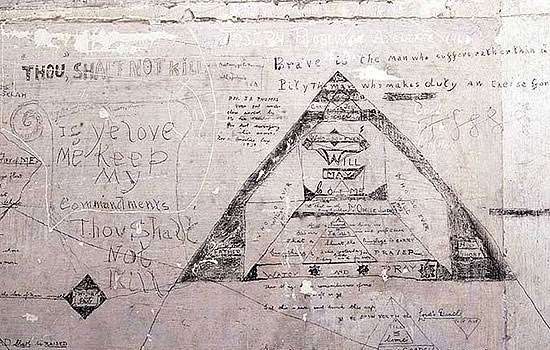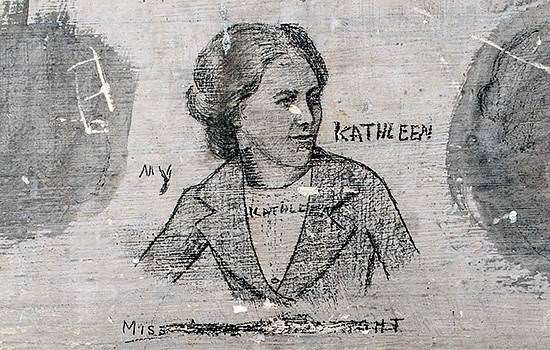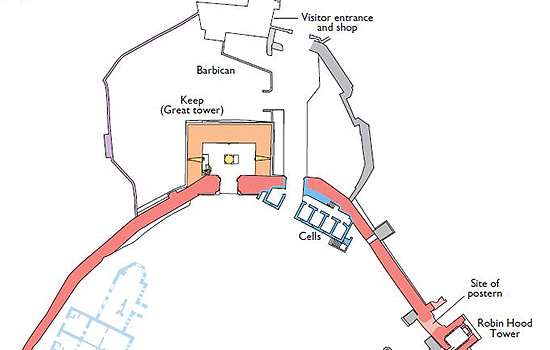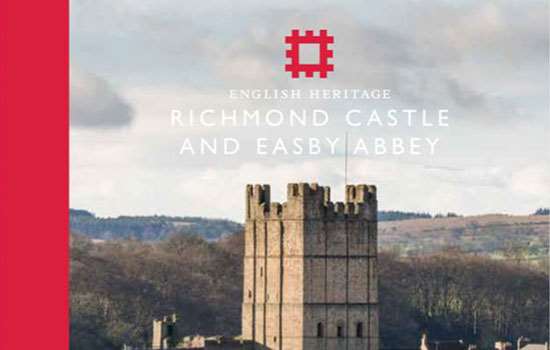Curtain wall and towers
The main enclosure of the castle is mostly surrounded by an 11th-century curtain wall, a uniquely well-preserved example of such early fortification. All the main medieval domestic buildings stood against this wall.
Along the east curtain wall were three square-planned towers. The northernmost of these, known as the Robin Hood Tower, was probably begun in the late 11th century. The chapel on the ground floor of this tower may have been dedicated to St Nicholas. Traces of red paint, part of a medieval decorative scheme, are visible on the altar arch.
The middle of the three towers has collapsed, but the southernmost, known as the Gold Hole Tower, still stands to its original height.
Download a plan of the castle
Great Chamber
The remains of the great hall and the inner apartments of successive lords of Richmond also stand against the east curtain wall, south of the collapsed tower. Lines of square sockets in the partition walls show that the buildings had two storeys.
The three upper rooms of this range were described in the 16th century as forming a great chamber, a chapel and a ‘chapel chamber’.[1] The chapel is clearly identified by the remains of a grand west window and piscina (washbasin) in the south wall. The whole range was probably built in about 1300.
Scolland’s Hall
Adjoining the great chamber, standing against the south curtain wall, is the 11th-century block known as Scolland’s Hall. This is one of the most important surviving examples of early medieval domestic architecture in England. It has been called Scolland’s Hall since at least 1400, after a long-serving steward of the castle.[2]
The hall block was probably built in the 1080s. It is a two-storey structure with its main apartments on the first floor above an undercroft, typical of early Norman and Anglo-Norman domestic architecture. The undercroft, lit with rectangular windows on the south side, was probably used for storage.
The great hall on the upper floor was the main domestic interior of the castle, occupying almost the entire length of the block. Large windows lined both sides. At the east end, separated from the hall by a stone wall, was a small withdrawing chamber, or solar. Count Alan (see History of Richmond Castle) or his deputy could have retired from the hall to this room to relax or sleep. There is also evidence for a balcony outside the east wall, overlooking the castle garden (later known as the Cockpit).
In the 12th century a new range was built to the west, abutting the hall. Three doors were punched through the west wall, giving access to a kitchen, buttery and pantry. A wooden screen may have concealed them from the rest of the hall. In about 1300 the building was further altered, perhaps as the result of a fire.[3] The north window at the east end was turned into a door, giving access to the newly built chapel and chamber range to the north.
Keep
The keep as it stands today is the product of many periods of building and repair. The first phase involved building the great archway into the ground floor, the original 11th-century entrance to the castle. This was absorbed within the new keep, which was probably built by Duke Conan in the mid-12th century. The scale of the keep is vast, rising to just over 30 metres (100 feet), and gives an impression of solidity and strength.
Conan’s tower follows in a tradition of square keeps started in England by William the Conqueror, and can be compared in design to royal castles in the north of England at Bamburgh and Carlisle. It is topped by four square turrets, and each face is decorated with shallow buttresses. On the first floor, directly overlooking the market place, are three ornamented windows, which may have served as balconies where Duke Conan could make public appearances.
Countersunk deep inside the tower is the modern roof with a flat top. The original roof sprung from the same level, but rose to a point. There are fine views across the town from the parapets of the tower.
Read a history of Richmond Castle
Keep interior
Access to the interior was through the door at first-floor level. A modern stair now leads to this, but a survey of 1538 records an earlier building housing an entrance stair. This was apparently not fortified or built of stone – even early views of the castle show no sign of its remains.
The present entrance opens to a small lobby with two further doorways. The doorway to the right leads into the first-floor room, a high chamber with a central pillar. From the left door a straight stair rises to the second floor. At the top is a second lobby, probably a waiting room for the main second-floor chamber.
This magnificently proportioned room is open to the roof. It probably served as a great hall, with a dais set beneath the pair of windows at the far end of the room.
The ground floor of the keep was vaulted in the late 13th century. A spiral stair was also inserted, connecting the ground and first floors.
Download plans of the castleBarrack block and cell block
A Victorian barrack block, built in 1855, once stood along the west curtain wall, extending northwards towards the keep. It was demolished in 1931.
The armoury was built in about 1865, beside the north gate. It was later adapted for use as a cell block containing eight cells. These were used in 1916 to imprison conscientious objectors, some of whose pencilled graffiti survive on the walls. The walls are currently too fragile to allow for more than very limited access, but a programme of conservation work between 2016 and 2018 aims to stabilise the building and allow public access for the first time.
See some of the graffitiThe cockpit
To the east of the castle enclosure, outside the curtain wall, is the area known as the Cockpit. The name probably followed its use for cockfighting, a popular sport from the 16th to the 18th centuries.
The Cockpit may have been a garden from the foundation of the castle in the 11th century. A royal survey made in about 1280 records a garden ‘pertaining to the castle’, and an illustration dating to about 1400 shows the Cockpit area filled with fruit trees.[4]The wooden balcony projecting from the east end of Scolland’s Hall may have been designed to overlook the garden.
Excavation of the Cockpit has revealed evidence of 19th-century gardens, including the remains of ornamental flowerbeds, paths and a glasshouse. In 2002 English Heritage opened the present garden, commissioned from the designer Neil Swanson. It includes one work of topiary for each of the Richmond Sixteen, the conscientious objectors held here in 1916.
Buy the guidebook to Richmond Castle
Find out more about Richmond Castle
-

History of Richmond Castle
-

Conscientious objectors at Richmond Castle
-

Gallery of the cell block graffiti
-

Download a plan
Download this PDF plan of Richmond Castle to discover how its buildings have developed over time.
-

Buy the Guidebook
Buy the guidebook to Richmond Castle and nearby Easby Abbey.
-

MORE HISTORIES
Delve into our history pages to discover more about our sites, how they have changed over time, and who made them what they are today.
Footnotes
1. The National Archives (TNA), E36/159.
2. W Farrer and CT Clay, Early Yorkshire Charters, vol 4: The Honour of Richmond, part 1, 6, 18; vol 5, part 2, 201.
3. Some of the masonry around the windows in the undercroft is dark orange and pink, a sign that it has been exposed to intense heat.
4. British Library, Cotton MS Faustina, B VII (register of the honour of Richmond), fol 85v (accessed 20 April 2016).
